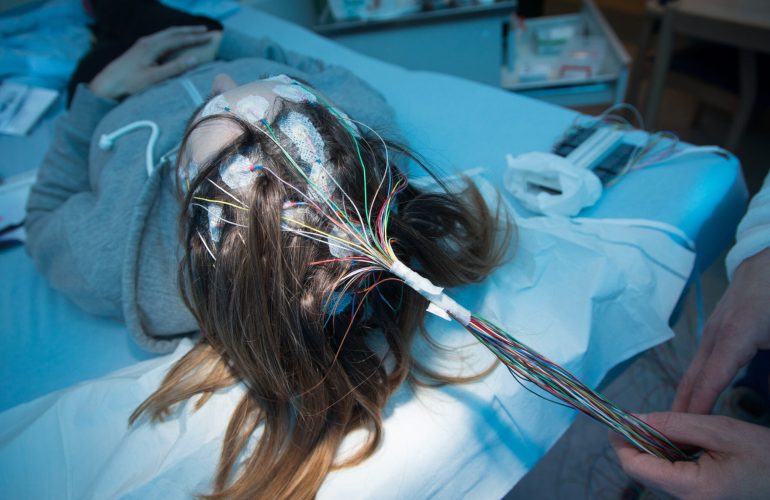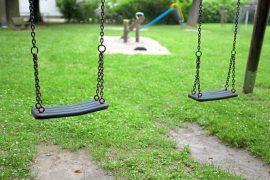The now 37-year-old lost his speech as a result of the incurable nerve disease ALS (Amyotrophic Lateral Sclerosis). In his right mind, he was trapped in his waking mind. Patients like them in the so-called “completely locked-in” state no longer have any control over their eye movements, which is why other communication aids fail. Because one possibility is to record eye movements with cameras and translate them into speech with software. Such a system was used by the famous physicist Stephen Hawking.
Now an international research team, co-led by Jonas Zimmermann from the Wyss Center of Bio and Neuroengineering in Geneva, reports that the study participant learned to communicate with the so-called brain-computer interface (BCI) at the sentence level. Invasive BCIs are small devices surgically implanted in the brain that use electrodes to record brain waves and convert them into control signals.
As the researchers wrote in the study published Tuesday, the patient was able to express his needs after about a hundred days. For example, on day 251 he asked his son if he wanted to watch the Disney movie Robin Hood with him.
how hard do neurons work
To form words and sentences, the computer learns to assign “yes” and “no” to the firing rates of neurons in the brain’s motor cortex. By reading a program in capital letters, the study participant can say yes or no to using that letter. In this way he managed to create an average of one character per minute.
The researchers conclude that the case study provides evidence that intentional communication is possible even for people who are completely mentally isolated.
However, Zimmerman lowers expectations: “This is a proof of concept with a single patient,” says the project’s scientific director in an interview with the Keystone-SDA news agency. The aim is to start a clinical study with more patients, for which new electrode implants are currently being developed that will be fully developed. The safety of such implants has to be tested in pre-clinical animal studies.
The one used in the ALS study participant is connected to the computer with a plug and cable. “The plug is prone to infection because the wound has to be open at all times,” Zimmerman says.
hope for the not too distant future
In the not-too-distant future, brain-computer interfaces could help many ALS patients. This is the opinion of Anne-Lise Giroud Memesier. Neuroscientists working at the University of Geneva and the Institut de l’Audition in Paris were not involved in the study. Until then, however, many technical hurdles and better decoding of language intentions will have to be overcome.
There is also difficulty in producing sufficiently successful proof of concept to persuade patients to undergo brain surgery. She also stresses the importance of electrodes. “They should be as safe as possible and have very little potential for infection and brain damage,” says Giroud Memesier.
fuss about previous studies
In addition to Jonas Zimmermann, German brain researchers Niels Birbaumer and Ujjwal Chowdhury are among the study’s leaders. Birbaumer and Choudhury already published a study in 2017, according to which four ALS patients learned to communicate – with the help of hoods equipped with sensors. However, the study had significant shortcomings, and the journal “Plos Biology” eventually retracted it. The researchers were accused of massive scientific misconduct that has yet to be denied.
The German Research Foundation (DFG) excluded Birbaumer from eligibility for any review activity and applications for five years and Choudhury for three years. While Chowdhary acknowledged this, Birbaumer filed a lawsuit against it in 2020. The legal process is nearing completion, and DFG announced on request that it would be possible to provide information about the result soon.
very nice result
According to the publisher Springer Nature, which published the current work, the study’s scientific reviewers are alert to controversies in each topic. They proceeded cautiously accordingly. For reasons of confidentiality, however, it could not comment on the editorial career of the individual contribution, a spokesperson wrote upon request.
Neuroscientist Giroud Memesier explains that other studies have shown that it is possible to decode binary decisions – that is, “yes” and “no” statements. The “episode” that happened did not change her opinion of Birbaumer’s research, nor her “sincere desire to find solutions to improve the quality of life of locked-in patients.” She considers the results of the current study “very plausible.”

Web guru. Amateur thinker. Unapologetic problem solver. Zombie expert. Hipster-friendly travel geek. Social mediaholic.





